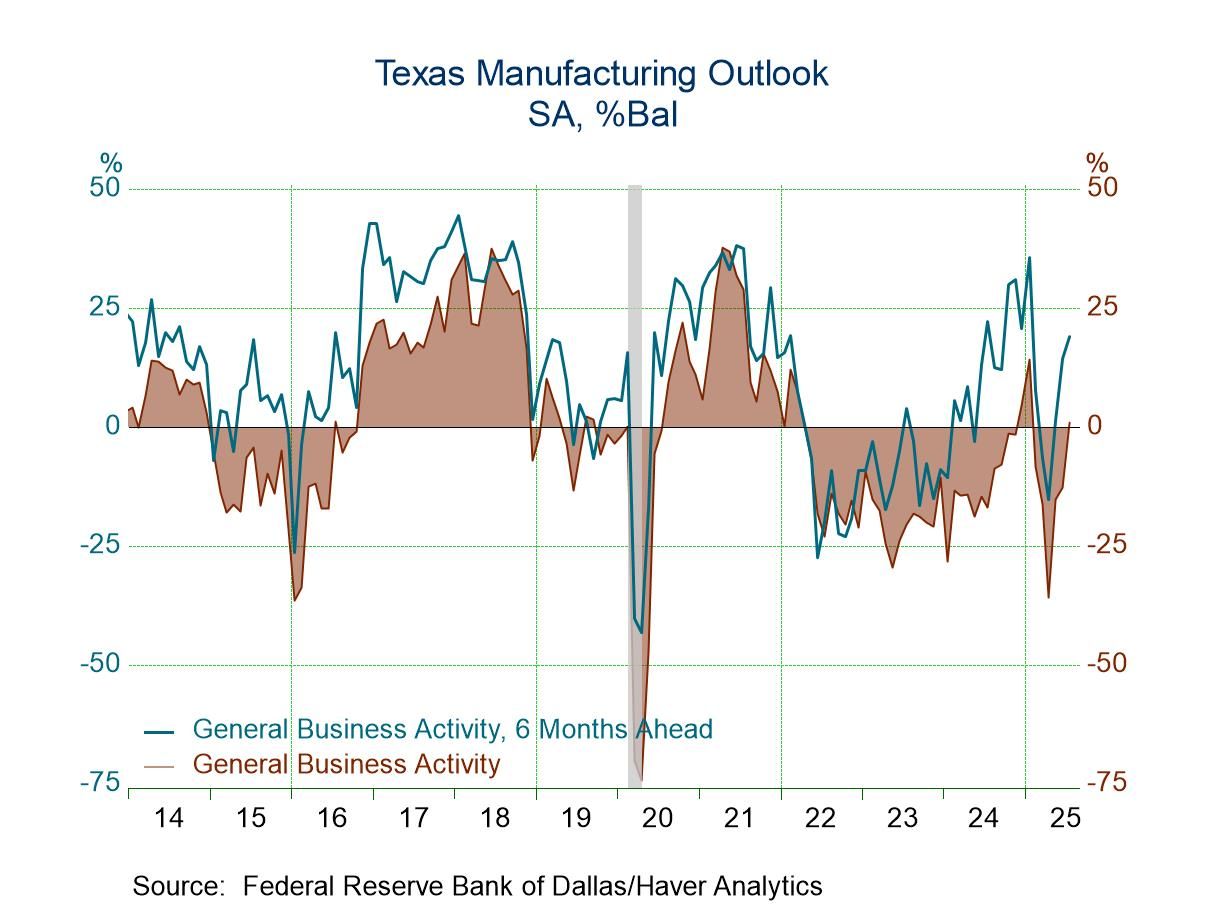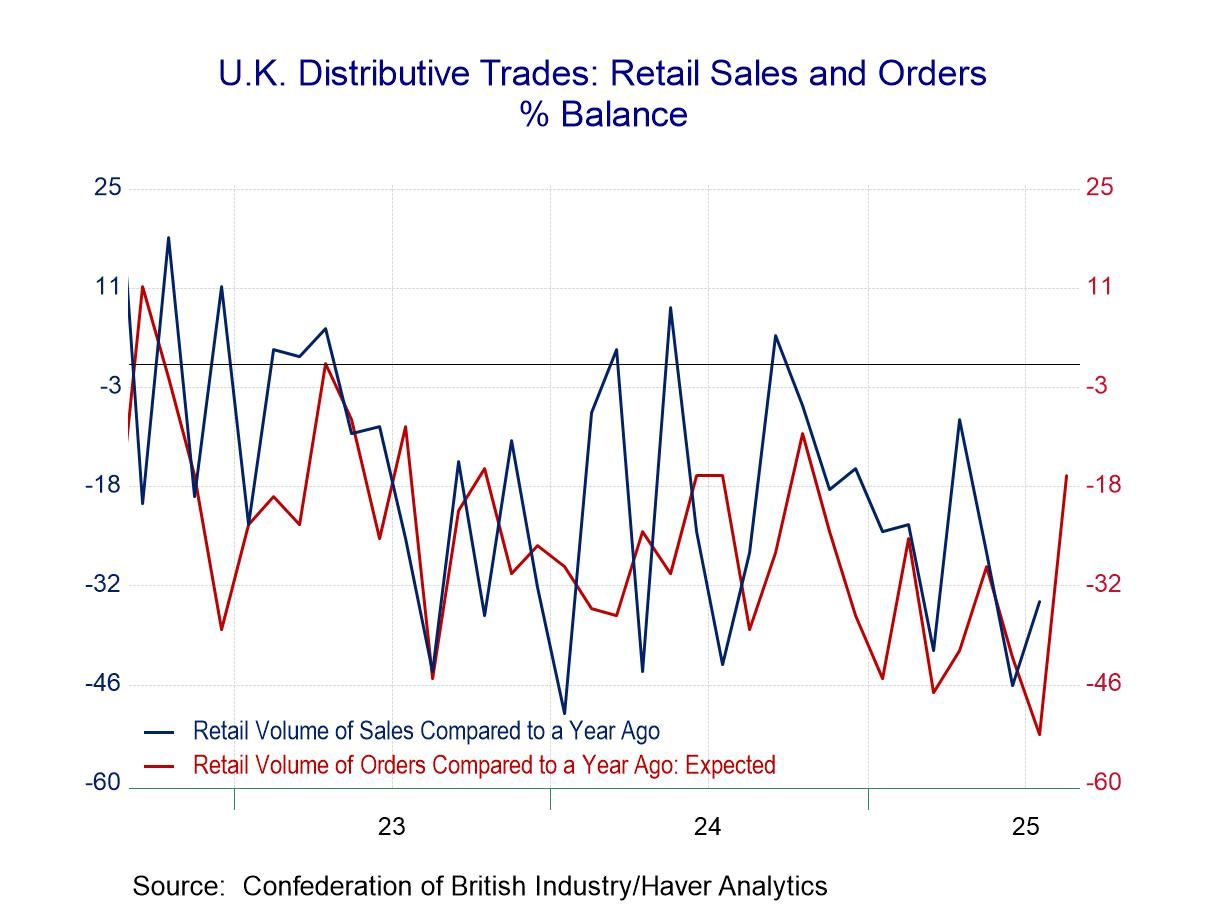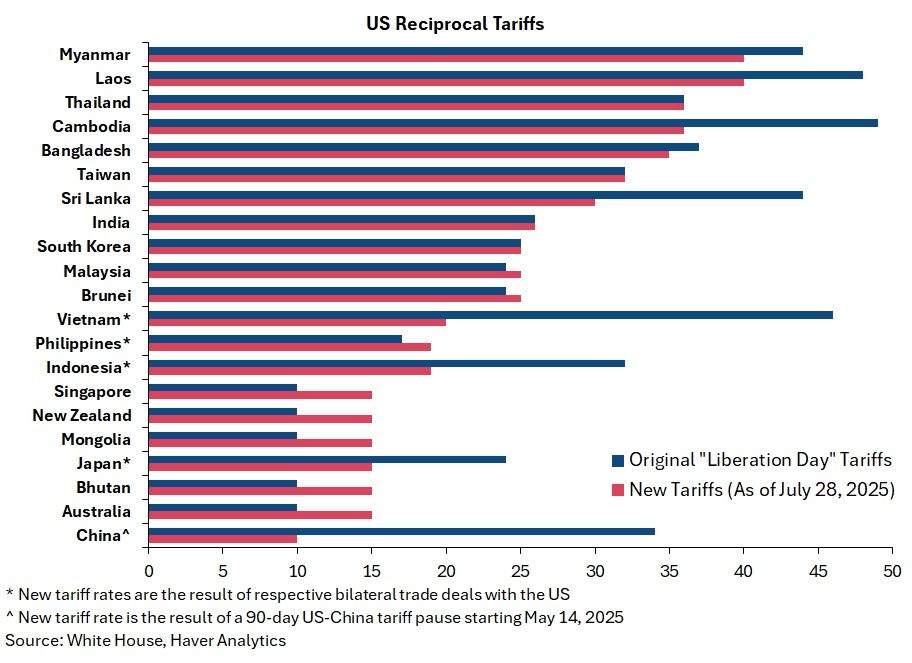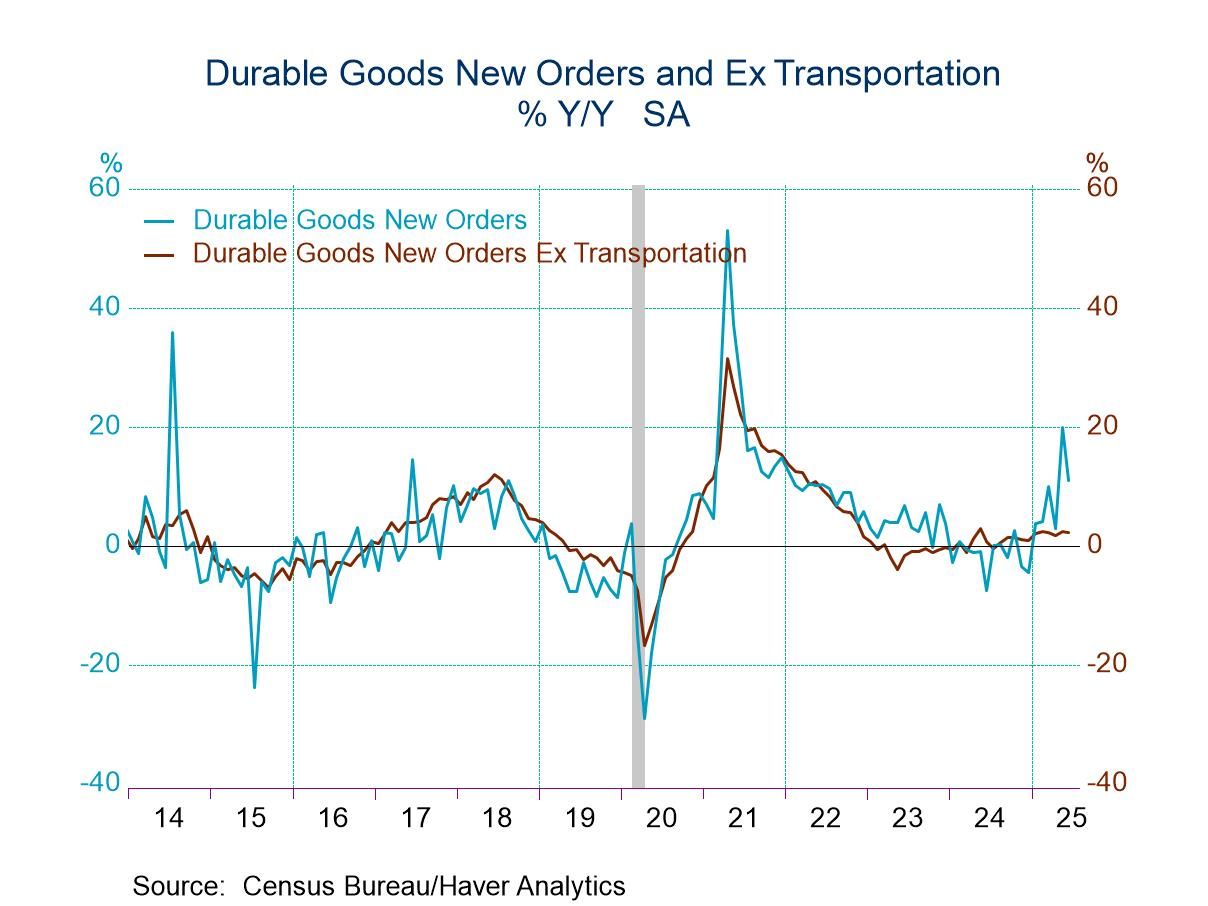U.S. Empire State Manufacturing Index Recovers in February
by:Tom Moeller
|in:Economy in Brief
Summary
- New orders & shipments readings rise, but employment declines.
- Pricing measures surge.
- Business expectations deteriorate.


The General Business Conditions Index from the Federal Reserve Bank of New York rose to 5.7 this month from -12.6 in January, after falling from 2.1 in December. The Action Economics Forecast Survey expected a reading of -3.0 for February. The percentage of respondents reporting an improvement in business conditions rose to 26.9% in February from 24.2% in January while the percentage reporting a decrease backpedaled to 21.2% and more than retraced its increase to 36.8% in January. The survey responses were collected between February 3 and February 11.
The headline index reflects the answer to a single question concerning the state of economic activity. Haver Analytics calculates a composite index from the five major components, which is comparable to the ISM manufacturing index. The reading rose to 53.6 this month and more-than-reversed its January decline to 50.0. A level of 50 is the breakeven point between expansion and contraction. The index is the average of five diffusion indexes: new orders, shipments, employment, supplier deliveries and inventories with equal weights (20% each).
Increases in the new orders and shipments indexes led the component improvement in February. The new orders index rose to 11.4 after falling to -8.6, as a greater 31.8% of respondents reported increases in orders and a lessened 20.3% indicated declines. The shipments index rose to 14.2, its highest point in three months, after falling to -1.7 in January. A slightly lessened 29.2% of respondents reported increases as a halved 15.1% indicated shipments declines. Unfilled orders improved to 1.1, its first positive reading since September, after rising to -4.7 in January. The inventories index rose to 8.7 this month after falling to 5.8 in January. The delivery times index edged up to -5.4 after surging to 3.5 in January, suggesting the shortest delivery times in nearly three years.
The employment reading deteriorated in February, but the length of the workweek shortened. The jobs index declined to -3.6 this month after rising to 1.2 in January. A lessened 7.6% of respondents reported an increase in employment while a little-changed 11.3% reported a decline. The average workweek index improved to -1.2 from -15.1 in January. It was the highest reading in three months.
Inflation indicators strengthened in February. The prices paid index surged to 40.2, its highest reading in just under two years, from 29.1 in January. Forty-one percent of respondents reported paying higher prices last month versus 31.4% in January while a lessened 1.1% reported paying lower prices. The prices received index jumped to 19.6, the highest level in nearly two years, from 9.3 in January. A greater 23.9% received higher prices while a lessened 4.3% paid lower prices.
Firms were significantly less optimistic that business conditions would continue to improve in the months ahead. The future business activity index plunged to the lowest level (22.2%) since May 2024 with a greatly reduced 43.2% of respondents expecting conditions to improve over the next six months, down from 53.3% in January. Expected growth in orders, shipments, inventories & order backlogs each fell versus January. The employment reading fell to its lowest point since July but hours worked reading remained strong. The expected prices paid index continued to rise, to its highest point in roughly three years, while prices received remained strong. Capital spending plans weakened moderately.
The headline index reflects the answer to only one question concerning general business conditions and is not calculated from the components. The indexes in this report are diffusion indexes and measure the percentage of respondents indicating an increase minus the percentage indicating a decrease with zero separating expansion from contraction.
The New York Fed survey data are contained in Haver’s SURVEYS database. The expectations series is in Haver’s AS1REPNA database.


Tom Moeller
AuthorMore in Author Profile »Prior to joining Haver Analytics in 2000, Mr. Moeller worked as the Economist at Chancellor Capital Management from 1985 to 1999. There, he developed comprehensive economic forecasts and interpreted economic data for equity and fixed income portfolio managers. Also at Chancellor, Mr. Moeller worked as an equity analyst and was responsible for researching and rating companies in the economically sensitive automobile and housing industries for investment in Chancellor’s equity portfolio. Prior to joining Chancellor, Mr. Moeller was an Economist at Citibank from 1979 to 1984. He also analyzed pricing behavior in the metals industry for the Council on Wage and Price Stability in Washington, D.C. In 1999, Mr. Moeller received the award for most accurate forecast from the Forecasters' Club of New York. From 1990 to 1992 he was President of the New York Association for Business Economists. Mr. Moeller earned an M.B.A. in Finance from Fordham University, where he graduated in 1987. He holds a Bachelor of Arts in Economics from George Washington University.






 Asia
Asia